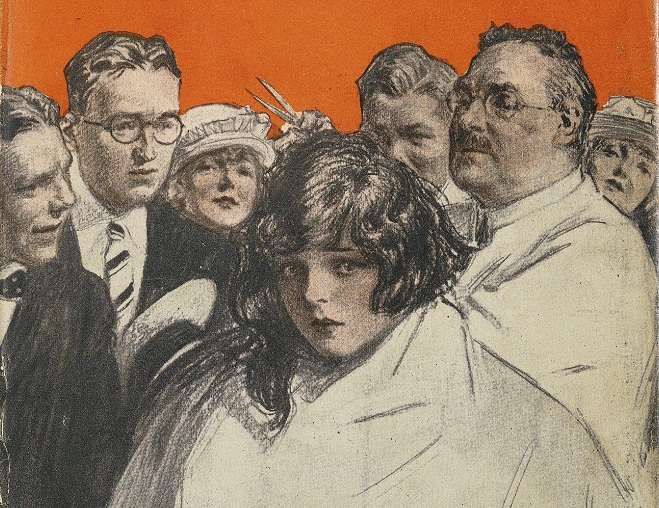From F. Scott Fitzgerald: Novels & Stories 1920–1922
Interesting Links
Film adaptation: “Bernice Bobs Her Hair”: starring Shelley Duvall and Veronical Cartwright; directed by Joan Micklin Silver; introduction by Henry Fonda
Coma Berenices: the story behind the constellation inspired by the legend of Egyptian queen Berenice (Ian Ridpath’s Star Tales)
Previous Story of the Week selections by F. Scott Fitzgerald
• “The Cut-Glass Bowl”
• “Porcelain and Pink”
Buy the book
 F. Scott Fitzgerald: Novels & Stories 1920–1922
F. Scott Fitzgerald: Novels & Stories 1920–1922
This Side of Paradise | Flappers and Philosophers | The Beautiful and Damned | Tales of the Jazz Age | 1,082 pages
List price: $40.00
Web store price: $24.00
Film adaptation: “Bernice Bobs Her Hair”: starring Shelley Duvall and Veronical Cartwright; directed by Joan Micklin Silver; introduction by Henry Fonda
Coma Berenices: the story behind the constellation inspired by the legend of Egyptian queen Berenice (Ian Ridpath’s Star Tales)
Previous Story of the Week selections by F. Scott Fitzgerald
• “The Cut-Glass Bowl”
• “Porcelain and Pink”
Buy the book
 F. Scott Fitzgerald: Novels & Stories 1920–1922
F. Scott Fitzgerald: Novels & Stories 1920–1922This Side of Paradise | Flappers and Philosophers | The Beautiful and Damned | Tales of the Jazz Age | 1,082 pages
List price: $40.00
Web store price: $24.00
 |
| Cover art by American illustrator W. E. Hill (1887–1962) for F. Scott Fitzgerald, Flappers and Philosophers (1920), depicting a scene from “Bernice Bobs Her Hair.” |
A few years later, Fitzgerald scribbled on the top corner of the letter’s first page, “Basis of Bernice.” The reference is to “Bernice Bobs Her Hair,” a 10,000-word story he drafted in 1919 that contains, in altered form, some of the very material he included in his letter to his sister. Fitzgerald sent the story to various magazines, including Women’s Home Companion, and it was met with rejection notes. In response, he cut nearly a third of the manuscript and completely rewrote the ending, making it “snappier”; it was accepted the following year by The Saturday Evening Post—the fourth of his stories to appear in the magazine and the first to earn him a mention on the cover. He included it in his first story collection, Flappers and Philosophers (published that same year, 1920), and the book’s dustjacket illustration is of a pivotal scene from the story.
When Fitzgerald sent a copy of the book to editor and critic H. L. Mencken (one of his literary idols), he added an inscription that divided the contents into “Worth Reading,” “Amusing,” and “Trash,” and he included “Bernice” in the last category. One suspects, however, that he might have been anticipating Mencken’s supercilious reaction to each of the selections. In any case, it is almost certain Fitzgerald later thought highly of the story. In 1935 he wrote to the British publisher Chatto & Windus and proposed a collection of his twenty-one best stories, including “Bernice” as one of only four selections from Flappers and Philosophers. The preeminent Fitzgerald scholar Matthew J. Bruccoli offered this assessment: “It occupies an important position in the Fitzgerald canon as a witty early treatment of a characteristic subject that he would later examine more seriously: the competition for social success and the determination with which his characters—especially the young women—engage in it.”
Notes: On page 361 is a reference to the works of Annie Fellows Johnston, a widely read author of children’s fiction during the early decades of the 1900s. The quote by Oscar Wilde paraphrased on page 370 is from A Woman of No Importance.
* * *
After dark on Saturday night one could stand on the first tee of the golf-course and see the country-club windows as a yellow expanse over a very black and wavy ocean. . . . If you don't see the full selection below, click here (PDF) or click here (Google Docs) to read it—free!This selection may be photocopied and distributed for classroom or educational use.